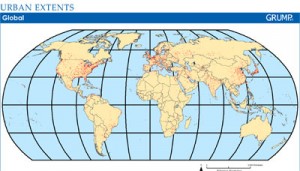Earth Sciences114
-

Major Spatial Data Collection Released
Urbanization poses both challenges and opportunities for sustainable development and environmental management. Improved data on patterns of human settlement and trends in population can help researchers and policy makers better understand differences between urban and rural areas in terms of their impacts on the environment and vulnerability to environmental variability and change. The newly released…
-
New Salt Map of Seas Gives Scientists Taste of Discoveries Ahead
After less than a month in operation, a new NASA satellite has produced the first map showing how saltiness varies across the surface of the world’s oceans. Salt influences how seawater and heat move around the globe and also tells oceanographers how much rain and evaporation is happening at the surface. Until now, salt measurements…
-

Jumping Ship
As we finally reached our prime target area, it was time for me to leave the ship and return home. Despite initial struggles on navigating the Brahmaputra River, we have worked together with the ship’s crew and pilots for a successful method. And now as I leave with many new friends, the best data is…
-

Cruising up the Brahmaputra
Rejoining the ship, we sailed up the Padma and Jamuna (Brahmaputra) Rivers. Hurrying to our primary area with the help of pilots, we finally collected good seismic data.
-

Planning for Future Disasters
On September 13, the Senate passed a $7 billion disaster aid package that will replenish the Federal Emergency Management Agency’s depleted funds in order to aid several states still reeling in the wake of widespread flooding, wildfires, tornadoes and tropical storms. But cleanup and recovery is only one part of the disaster cycle. Fortunately, Congress…
-

To Meghalaya and back
From our return to Jamalganj, we headed east searching for a river to carry us up to the Indian border across the Dauki Fault. Along the way, we celebrated Steve Goodbred’s birthday. However, even the biggest of the rivers proved too shallow for our boat. We switched to the
-

Return to Jamalganj
We have been sailing along collecting data, but so far the data quality is poor due to shallow gas in the sediments. We thought we might have some problems with gas, but the problem is more widespread than we expected. We are now out of the inland summer lake where we met the boat and…
-

Climate Scientist Studies Ancient Shorelines
The seas are rising, as they have during past periods of warming in earth’s history. Estimates of how high they will go in the next few thousand years range from five meters, putting greater Miami underwater, to 40 meters, wiping most of Florida off the map. “The range of estimates is huge to the point…
-

Exploring an Unknown Arctic Seabottom (No Ice Included)
Readers can follow a New York Times blog from the arctic as the U.S. flagship vessel for charting geology under the seabed sails the Chukchi Sea, north of Alaska and Siberia. By sending sound pulses to the seabed and reading the echoes, scientists conducting the Chukchi Edges project aboard the Marcus G. Langseth hope to understand the structure and history of…

AGU25, the premier Earth and space science conference, takes place December 15-19, 2025 in New Orleans, Louisiana. This year’s theme—Where Science Connects Us—puts in focus how science depends on connection, from the lab to the field to the ballot box. Once again, Lamont-Doherty Earth Observatory and Columbia Climate School scientists, experts, students, and educators are playing an active role, sharing our research and helping shape the future of our planet. #AGU25 Learn More
